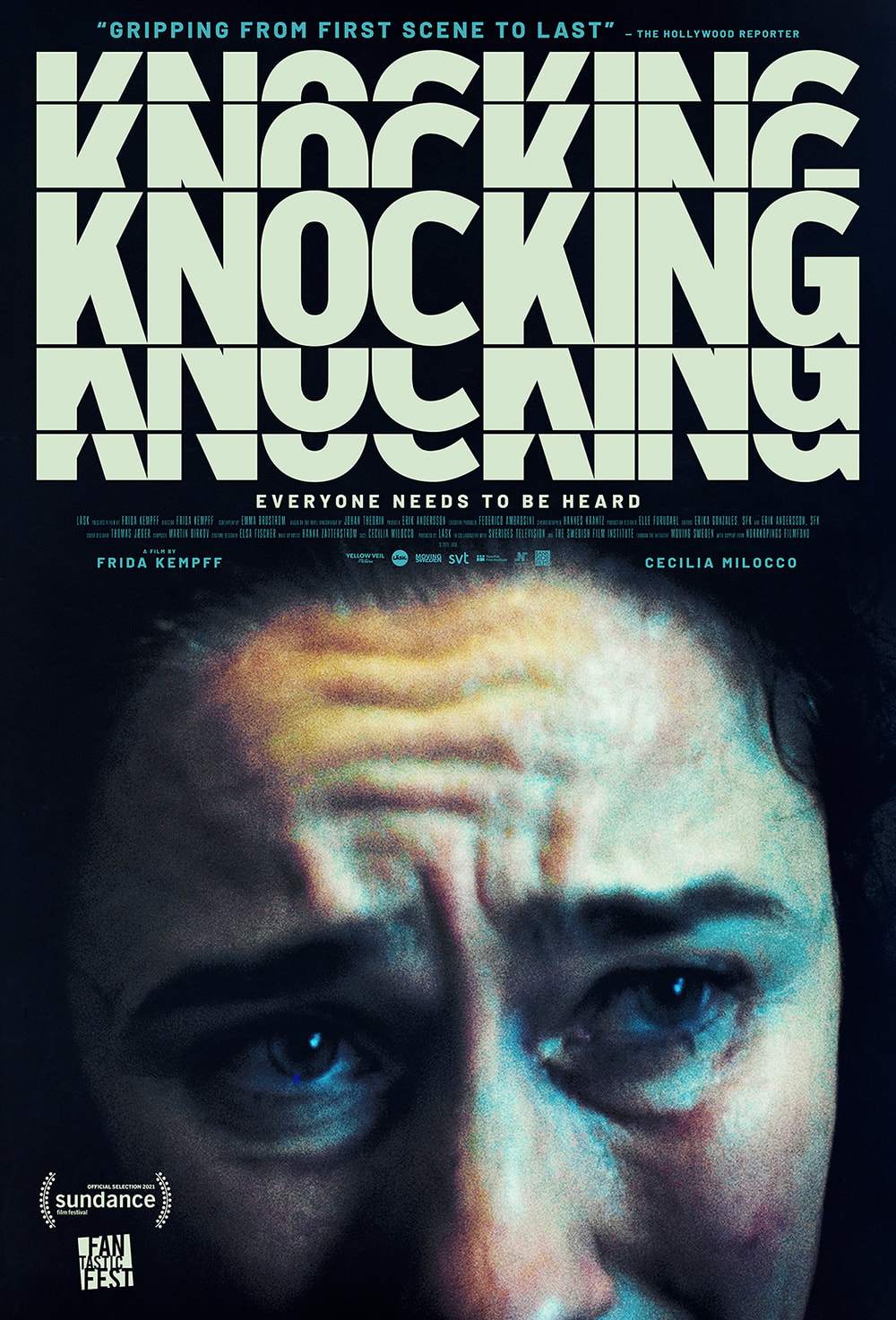|
Originally published on Elements of Madness. If you’ve spent any time living in an apartment building or a dorm, you’ve probably had a few run-ins with noisy neighbors. It takes guts to knock on a stranger’s door and ask them to keep it down. Depending on what kind of noise you hear, you might even opt to skip the awkward conversation and call the police. But what happens when nobody else can hear what you’re hearing? What do you do when someone is calling out to you for help and the police don’t believe you? Who can you turn to when your neighbors think you’re having a psychotic break? In Frida Kempff’s psychological thriller, Knocking, a woman named Molly (Cecilia Milocco) becomes suspicious of the men in her apartment building when she hears persistent knocking and crying coming from the floor above her at night. No one else can hear it, and no one is interested in helping her solve the mystery. But Molly knows what she heard, and she’ll stop at nothing to help the unknown woman on the other side of her ceiling. The story begins when Molly moves into a new apartment after undergoing psychological treatment in a hospital. Molly is a quiet person who keeps to herself, and she’s certainly not looking for trouble. In fact, as she makes her silent journey from the psychiatric hospital to her new home, her timid expressions and hesitant gestures reveal that she’s only looking for one thing: peace. Still, trouble finds her right away. As soon as she arrives at the apartment building, she makes eye contact with a male tenant who gives her a chilling, unfriendly glance. Then, while riding the elevator, she notices that someone has spray-painted the word “help” in bright red letters on the elevator wall. She seems interested but not concerned. After all, it’s not like she’s moving into a luxury five-star apartment building. The grey, drab, graffitied building with its unfriendly fluorescent lighting suits the story well, setting the tone for a psychological thriller about isolation. This first scene tells us a lot about Molly and foreshadows the conflicts to come, but it’s also subtle and controlled. The most important thing we learn from this opening sequence is that Knocking isn’t about jump scares and gory visuals. It’s about nuanced psychological horror. We learn, in this first scene, that this is a movie that requires us to pay attention. It’s a movie that’s meant to make us question what’s real. With that being said, if you prefer movies with lots of action and quick-witted dialogue, Knocking might not be the film for you. Visually, it’s pretty grey and depressing. Knocking is defined by mood and tone rather than plot, and its heaviness makes it feel like a hazy fever dream. Writer Emma Brostrom, who adapted the story from a short novel by Johan Theorin, establishes the mood by setting the story during a record-breaking heatwave that makes the characters hot and irritable. Their constant sweating and complaining make the story feel unsettled and reflect Molly’s growing uneasiness and suspicion. Most of the scenes involve Molly by herself, so there’s not a lot of dialogue. While the plot is intriguing, the first half of Knocking is calm, subdued, and controlled. It’s the kind of movie that makes you want answers, but it’s not the kind of movie that puts your stomach in knots the whole time. Because there’s not a whole lot happening in the plot, Knocking needs strong performances, cinematography, and sound design in order to work. Thankfully, the film delivers in all three categories. Cinematographer Hannes Krantz makes us feel close to Molly while also showing us that she’s extremely isolated. His camera work is deliberate and intimate, highlighting Molly’s perspective with frequent closeups and tracking shots. The thoughtful editing by Erik Andersson and Erika Gonzales is also worth noting. They integrate flashbacks into the story seamlessly without making it corny. While there’s some music in Knocking, the sound design relies mostly on static drones, white noise, and sound effects that make Molly’s apartment seem frighteningly lonely. Together, the cinematography, editing and sound design help define Molly as a character and highlight Milocco’s dedicated performance, which is probably the strongest aspect of the movie. It’s clear that Milocco really took the time to think like Molly and get inside the character’s head. She didn’t have a lot of dialogue to work with, so she had to work that much harder to make Molly believable and sympathetic. However, she makes it look so easy. Her facial expressions and emotional timing are just right. You can tell just by looking into her eyes that Molly has been dealing with some serious trauma. Milocco successfully embodies a quiet, deep, and introspective character with palpable emotional walls. Despite what the other characters think of her, it’s easy to side with Molly thanks to Milocco’s powerful and emotional performance. By the time the plot picks up in the second half of the movie, you’ll find yourself rooting for Molly 100%. It’s also easy to like Molly because she’s such a well-written character. She’s the kind of gutsy gal who can knock on her neighbor’s door and ask him to keep it down. She can stand up for herself, and she never seems to doubt her own perception of reality. She has no trouble asking for help, and when she doesn’t get it, she finds her own way to make things work. Molly is the kind of character who can really teach us how to sympathize with others. In that sense, Knocking accomplishes exactly what it set out to do.
0 Comments
Leave a Reply. |
"Our embodied spectator, possibly perverse in her fantasies and diverse in her experience, possesses agency...finally, she must now be held accountable for it." Categories
All
|




